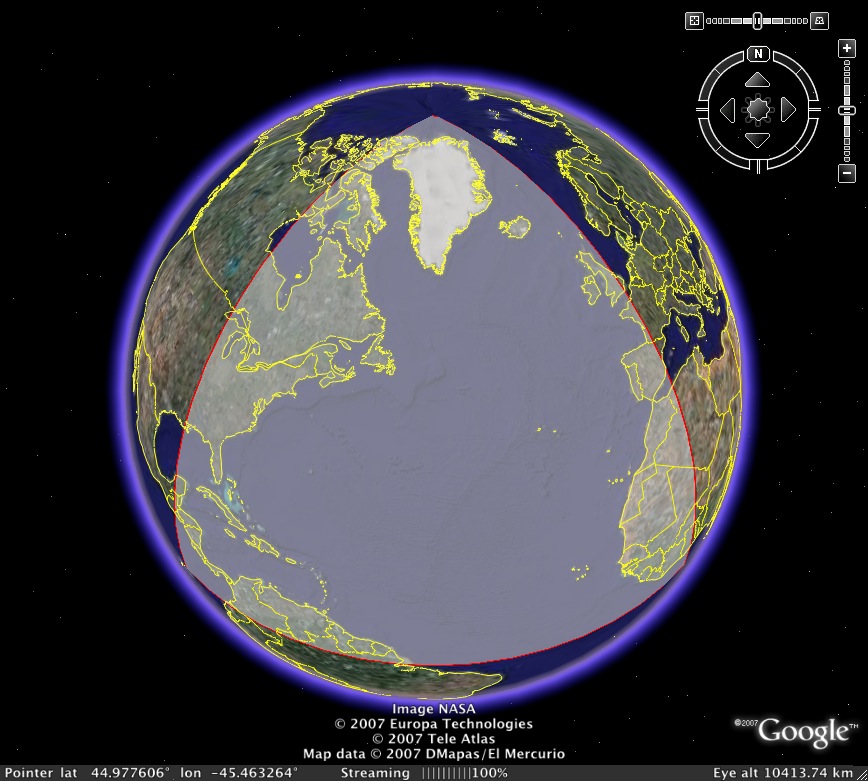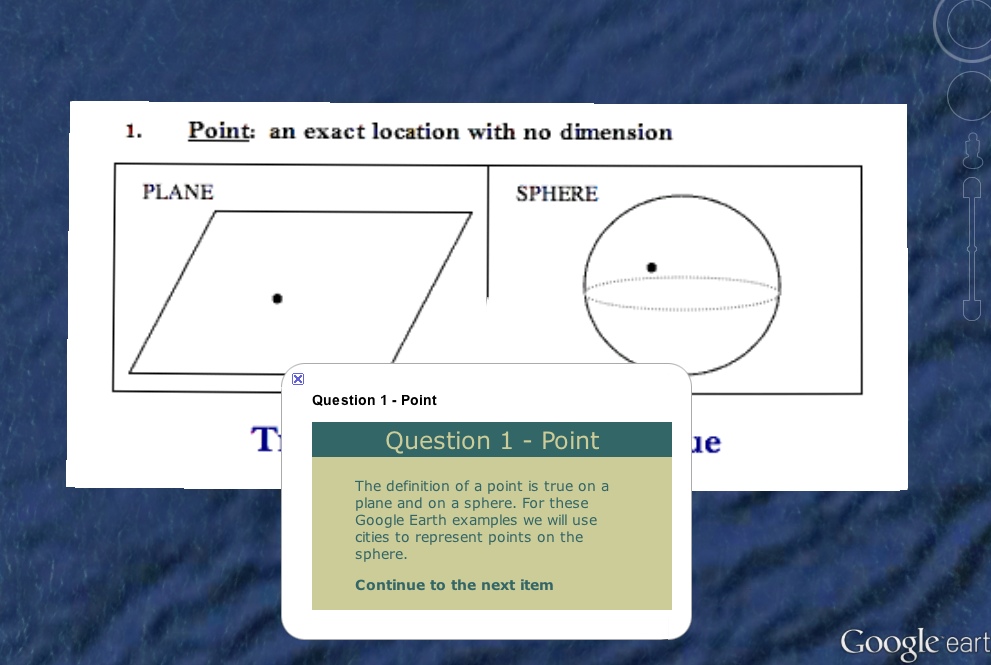|
Teacher Downloads
|
The Flat Earth
Objectives
Lesson Description The Spherical Geometry exercises included here will cover what some may consider Non-Euclidean Geometry or Differential Geometry. The primary goal is to demonstrate a logical progression of geometric ideas, much as Euclid did in his Elements. The students will start with assumed truths (postulates) and definitions, and then use those to form logical truths (theorems). At the end of the activity, the students will be asked to write a logical progression of geometric ideas as they relate to the curved surface of sphere. Google Earth provides students with computer-generated models in 3-dimensional space that they can manipulate. This is helpful because, even though we live in a 3-dimensional world, some students may find these concepts abstract, especially after years of exposure to Euclidean ideas. Consider the image on the left. Most students can dutifully recite that the sum of a triangle’s angles is 180 degrees. But what about on a sphere? This image shows a triangle with an angle sum of 270 degrees with two right angles on the equator and one at the pole. Like this example, it is hoped that the included exercises will allow students to explore dimension and space in a new way. The lesson begins with students examining geometric ideas for a plane and sphere on paper. The Geometric Ideas worksheet should be completed by the students in pairs to encourage dialogue. Once they have completed the worksheet, direct them to the Google Earth download on RealWorldMath.org. Again dialogue and debate is encouraged, so have the students work in pairs for this portion also. They will often have to think of exception to rules or revise what they wrote before. This process should be encouraged. When the students have finished in Google Earth, ask them to write a list of postulates or theorems for Spherical Geometry. Each pair could present these to the class, and a master version could evolve after a class debate. You may find these links helpful: |



